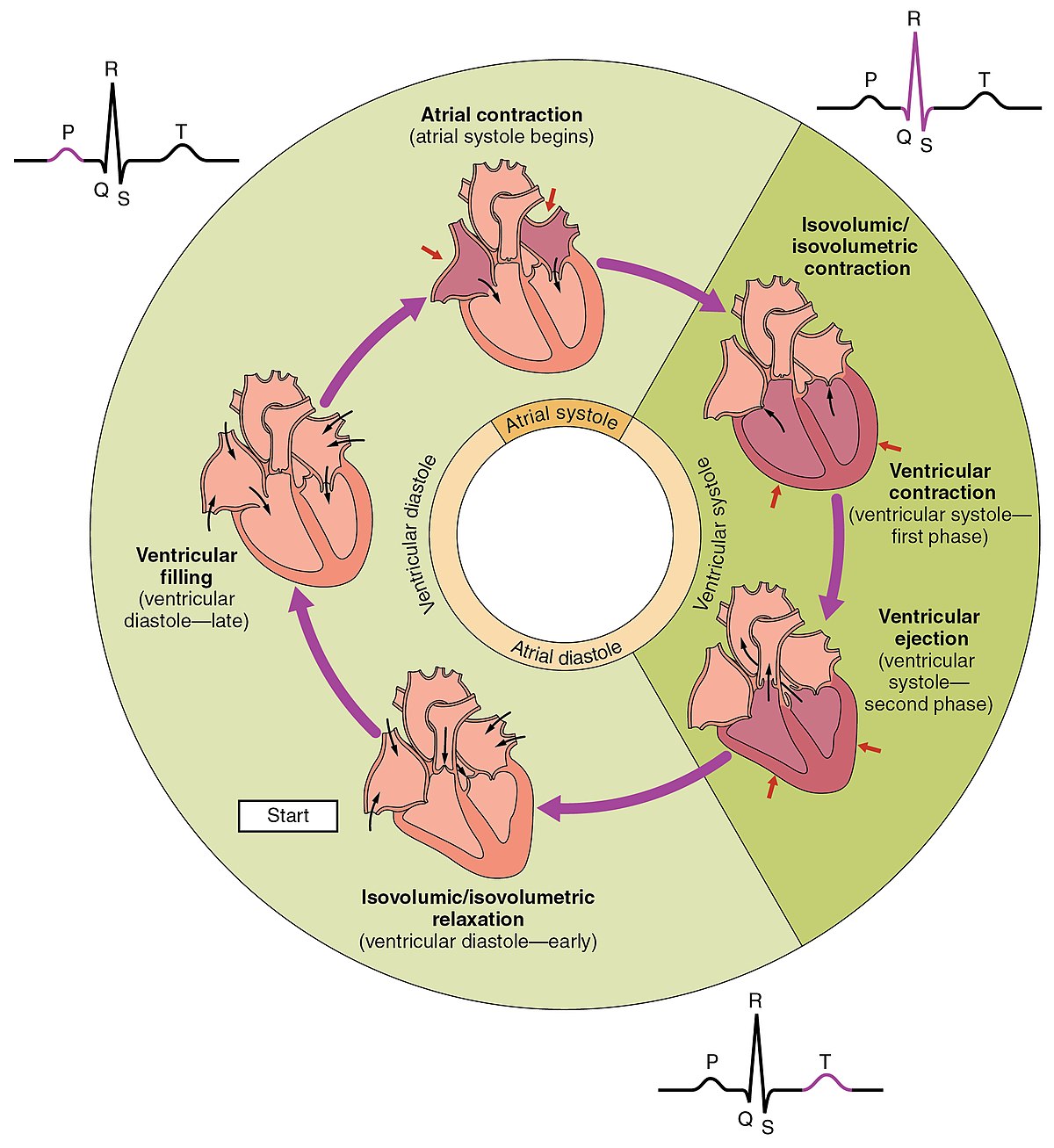Watch Rosita, our cardiovascular system avatar, explain the basics of the heart being a double pump.
The function of the heart
The heart is a muscular double pump located between the lungs in the chest cavity.
As the hub of the circulatory system, it is one of the body’s most vital organs and beats to pump blood around the body. This delivers oxygen and nutrients and removes carbon dioxide and wastes from the tissues, practically every moment that most of us are alive.
The structure of the heart
The heart has four chambers: the right atrium and ventricle receive deoxygenated blood from the body and pump it to the lungs for oxygenation, while the left atrium and ventricle receive oxygenated blood from the lungs and pump it around the body to the tissues.
The heart is a double pump because blood goes through it twice. Firstly, the blood leaves the heart to get oxygen from the lungs. Oxygenated blood then enters the heart which is pumped to the whole body through the aorta.


The double pump
The heart beats in a double cycle. When the right side of the heart relaxes, deoxygenated blood is drawn into the right atrium from the inferior and superior vena cava (major veins) and then through the tricuspid valve into the right ventricle.
When this side of the heart contracts (squeezes), blood is forced through the pulmonary valve and pulmonary artery, through the oxygenating tissues of the lungs and into the pulmonary veins (one from each lung).
As the left side of the heart relaxes, oxygenated blood is drawn into the left atrium and then through the mitral valve into the left ventricle.
Lastly, as the heart contracts, the powerful muscles around the left ventricle force the oxygen-rich blood through the aortic valve and the aorta (a large artery) to reach the rest of the body via systemic circulation.
For the blood to be pumped effectively, the valves must open and close at the right time, and the different parts of the heart must be properly synchronised.1 This double cycle gives rise to the characteristic double “thump” of the heartbeat.
So, why doesn’t the heart just pump the blood through the lungs and to the rest of the body in a single cycle, which would seem more efficient?
The main reason for the existence of the double pump cycle is that the tissues of the lung are too delicate to withstand the same pressure that is needed to pump blood all the way through the organs of the body.
The blood pressure in the aorta as the left side of the heartbeats (systolic pressure) is 120 mmHg, whereas in the pulmonary artery the systolic pressure is only 18-25 mmHg.2,3 This means the heart needs to behave as both a low-pressure pump and a high-pressure pump.


The way it does this is to separate these functions into the right and left sides of the heart, respectively.
Keeping your heart healthy
One of the biggest changes most people can make to keep their heart healthy is making adjustments to their diet:
- Eat more fresh fruit and vegetables
- Switch to wholegrain cereals
- The kind of fat we eat is also important. Focus on unsaturated fats (omega 3, omega 6) in your food. Good sources of these fats include avocados, nuts, oily fish, and sunflower seeds
- Avoid processed foods as much as possible, as these are packed with sugar, salt, and saturated fats
- Reduce salt intake as too much salt is bad for your heart and can cause high blood pressure
According to Stacey Wojcik MBA BSN RN, from the University of Rochester, it is suggested that you reduce your intake of saturated fats, decrease your alcohol consumption, eat more fruit and vegetables and exercise regularly.
Eat at least 2 cups of fruit and 2½ to 3 cups of vegetables every day. Produce is full of vitamins, minerals, fiber, and other essential nutrients. And produce is practically free of fat and cholesterol.
Source
Understanding and controlling your cholesterol is important too. Get to know the difference between bad cholesterol (LDL) which can coat the inside of your arteries, and good cholesterol (HDL).
Find out your blood cholesterol levels by asking your doctor for a heart health check, especially if you are over 45. Diet is key to controlling cholesterol levels, but you may also need a type of medicine called statins.
Try to become more active by engaging in gentle to moderate exercise, but pick something you enjoy so that you remain consistent. Moderating your alcohol intake and giving up smoking are also key changes that will help protect your heart.
Conclusion
The heart is a four-chambered double pump in your chest that pumps blood around the lungs to add oxygen and remove carbon dioxide and then pumps it around the body to deliver oxygen to your organs and tissues.
References:
- Structural Heart Disease [Internet]. Yale Medicine. 2021 [cited 2022 Jan 20]. Available here.
- Homan TD, Bordes S, Cichowski E. Physiology, pulse pressure. 2018; Available here.
- Nauser TD, Stites SW. Diagnosis and treatment of pulmonary hypertension. Am Fam Physician [Internet]. 2001 May 1;63(9):1789–98. Available here.






